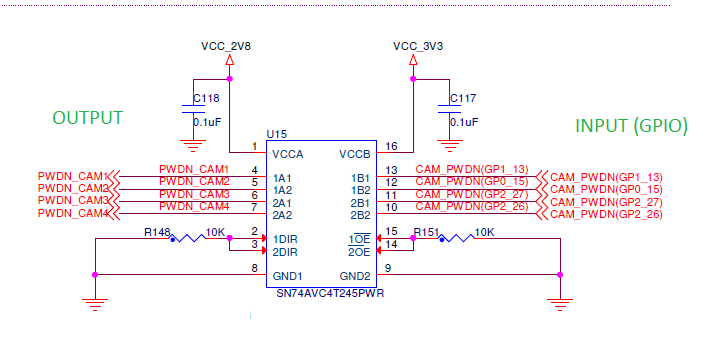Other Parts Discussed in Thread: SN74LVC125A, SN74AVCH4T245
Hi....I'm using SN74AVC4T245 in my design. This "SN74AVC4T245" used to translate 3.3V to 2.8V as mentioned in the below schematic. I didn't connect any pull-up resistors on A or B port bus.
I'm always getting 0V at Port A (output port) even-though If I drive high at B Port (input port). Do you have any idea for this issue ?
Regards,
Azlum



